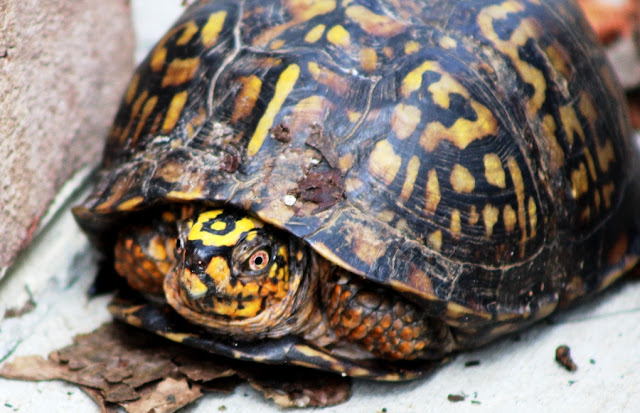If you
enjoy observing nature, there are several ways you can enhance your yard to make
it more inviting for wildlife. Regardless
of size, any yard can become a haven for birds with careful plant selection and
placement. With a few easy steps, you
can invite birds into your yard and enjoy the many benefits of habitat
gardening.
Layering for a Safe
Habitat
A wide,
flat expanse of green lawn is a dead zone for nature. A safe habitat provides various heights and levels
of plants to protect birds from predators and provide cover against harsh
weather. Shrubs of short and medium
height, especially evergreens, provide cover and nesting sites for many
birds. Tall trees provide protection and nesting for a
variety of songbirds and migrating birds.
Even dead trees are beneficial for birds that eat insects and nest in
cavities. Planting one tree or shrub is
a start, but planting a grouping of plants of various heights is ideal.
Planting Natives for
Food
There
are hundreds of plants from all over the world available for purchase so the
best way to narrow down the selection is to choose native plants. The birds in Virginia have co-evolved over
time with plants available in this area.
Plants from China or the tropics may look nice, but native plants
provide food for a wide variety of wildlife.
Native plants are also proven to grow in Virginia’s soil and climate so
are more likely to thrive in your yard. Nonnatives
offer little food for wildlife and can also become invasive. In the past, many homeowners planted Chinese
privet (Ligustrum sinense) for privacy hedges, a plant the U.S.D.A. now lists
as “very invasive” because it has escaped cultivation, spreads rapidly and
threatens our native landscape. Alternatively,
a homeowner could plant wax myrtle (Morella cerifera) for a privacy hedge. It is a native evergreen that offers
protection from predators, and birds love the small berries available in winter
when food supplies are limited. Here are
just a few native shrubs and trees that will look good in your yard, are easy
to grow, and provide berries and food for birds and other wildlife:
Dogwood (Cornus florida)
Beautyberry (Callicarpa americana)
Serviceberry (Amelanchier spp)
Crabapples (Malus spp)
Black Cherry (Prunus serotina)
Eastern Red Cedar (Juniperus virginiana)
Oaks (Quecus spp)
Mulberry (Morus rubra)
In
addition to trees and shrubs that provide food, birds are attracted to the
seeds of many native flowers. Enhance
your garden and bird habitat by planting purple coneflowers (Echinacea pupurea), sunflowers (Healianthus spp), coreopsis (Coreopsis lanceolata)), black-eyed Susans
(Rudbeckia hirta) and bee balm, (Monarda didyma). A flower garden of native plants is an
inviting buffet for birds as well as butterflies and other insects, including
important pollinators.
Fresh Water
Birds
need water to survive, but they also use water for bathing and to remove
parasites. A birdbath will attract birds
to your yard but it must be properly maintained by keeping it filled and
clean. Keep a scrub brush near your garden
hose so that you can clean your birdbath when you refill it. Place your birdbath in a shady spot near a
tree or shrub that will provide protection from predators. And, place it near a window so you can watch all
the activity.
Homeowner Benefits
By feeding
and protecting birds, you are playing an important part in wildlife
conservation. You are providing a
habitat at a time when widespread development is eliminating wildlife habitats
in many areas. At the same time, you, as
a homeowner, will benefit in many ways.
Birds are fun to watch, especially during nesting season. And, birds are also very beneficial at
controlling insects in your yard. Some
birds feed solely on insects, but all birds, even seed-eating birds, catch
insects to feed their young. Birds will
consume a variety of insects and spiders throughout the spring and summer. Watching backyard birds is also a great way
to teach your children about the environment and the importance of wildlife conservation.
 |
| Thrashers, Eastern Towhees and Purple Finches are among the birds that love beautyberries. |
 |
Cardinals, Bluebirds, Cedar Waxwings and many others enjoy dogwood berries.
|
 |
| Butterflies and pollinators love purple coneflowers, and Goldfinches devour the seeds. |




























































